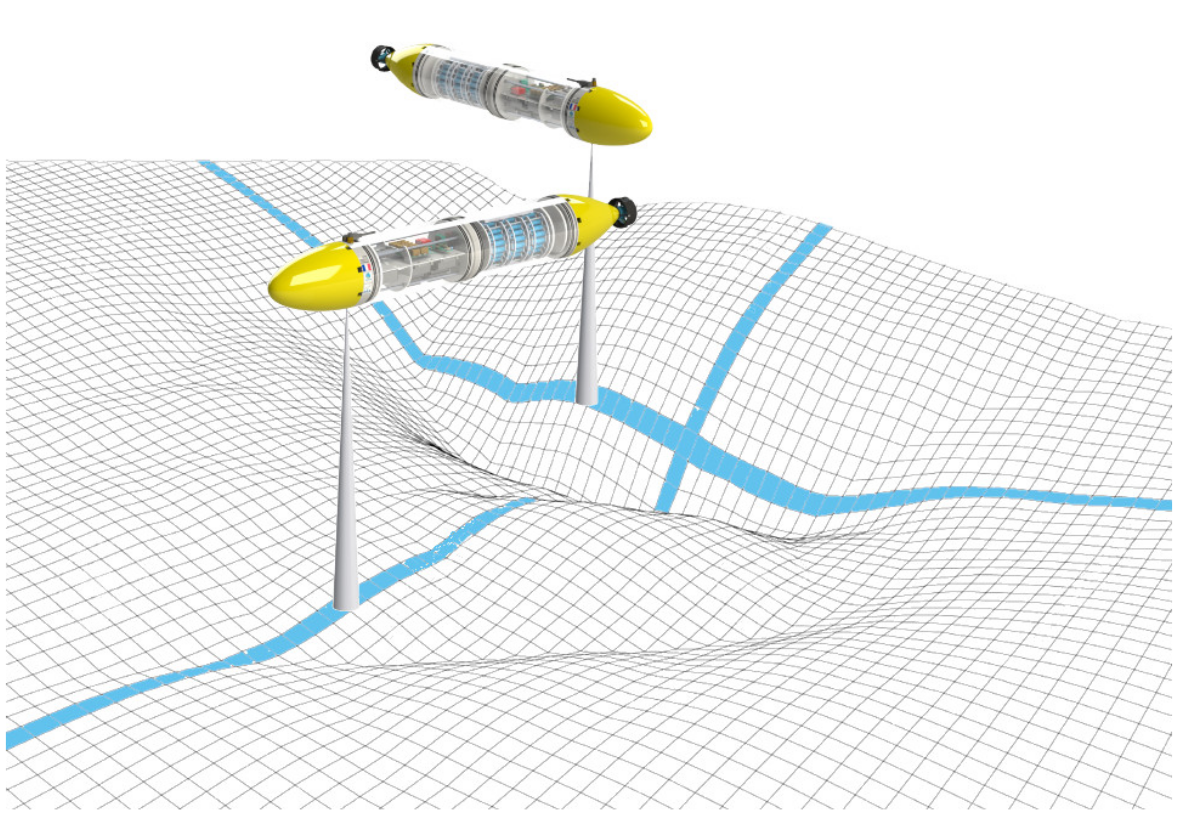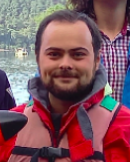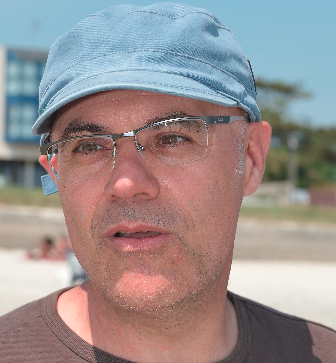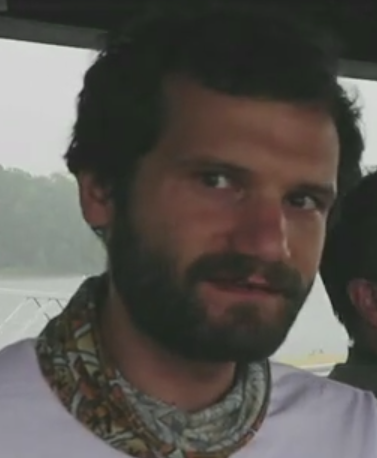


|

|

|

|

|

|

|

|
Robex est une des équipes du Lab-STICC. Elle fait partie du pole IA&O (Intelligence Artificielle et Océan).
Tous les ans sont organisés les Robex days.
Pendant ces journées, il y a des exposés internes à Robex avec souvent un invité extérieur.
Cette année, ce meeting se tiendra à l'ENSTA Bretagne le jeudi 8 décembre à 13h30 Amphi 2
![]()

Orthogonal control of a torpedo-like AUV in constrained environment
AUVs have many advantages compared to ROVs, such as the absence of a tether and the possibility of carrying out missions covering large areas. On the other hand, AUVs must have autonomy in terms of decision-making and energy. It is therefore necessary to design robust control laws to make the navigation of such vehicles safer. A model of a torpedo AUV will be proposed for simulation purposes and the development of control laws. Then, simple control laws will be presented for inertial navigation in a constrained environment, such as a swimming pool or a harbor.

La Robotique d'Exploration Karstique
Le karst joue un rôle fondamental dans le stockage et la dynamique des eaux souterraines. Il draine la ressource sur des échelles énormes et contribue à l'amplification (ou l'atténuation) des effets catastrophiques des épisodes cévenols. La connaissance de la dynamique de ces réseaux souterrains est un enjeu primodial et l'outil d'exploration robotique peut être un outil déterminant pour le recueil de connaissances sur les karst profonds. L'environnement karstique, subaquatique confiné et non structuré, est un terrain expérimental qui impose de repenser les solutions robotiques actuellement en vigueurs.

Stability analysis of high dimensional nonlinear systems
The stability analysis of nonlinear continuous systems often requires manual calculation, which can become time-consuming when dealing with complex systems. Some works use positive invariant sets to discuss stability. These sets can be numerically approximated using Interval analysis but the computational complexity is exponential. In this talk, we present a computational tractable numerical but guaranteed method based on Interval analysis to verify the robust positive invariance of ellipsoids to automatize the study of n-dimensional nonlinear systems’ stability. This method relies on a fast enclosure of a state integration by an Euler method. Interval analysis guarantees the results of the developed algorithms.

Construction of a mosaic from an underwater video using loop detection
In this presentation, we will present an interval technique for the construction of a mosaic from an underwater video collected in an underwater environment.
The principle is to use proprioceptive data collected by an AUV (here the lock Doppler and the inertial central) in order to detect feasible loops.
The procedure consists in six steps. (1) Use the proprioceptive sensors only in order to detect all feasible loops. (2) Eliminate all pairs of images
that do not correspond to loops. (3) Associate feasible pairs of images using image processing techniques
(4) Contract the feasible trajectories by taking into account the image associations. (5) Use the trajectory refinement in order
to reduce the number of feasible loops. (6) If the contractions are significant enough, goto Step 3.
The resulting fixed point technique is shown to converge. Some test-cases are presented in order to illustrate the efficiency of the approach.

Development of an UAV embedded acoustic simulator for precise relocalization next to previously detected targets
![]()
The use of Underwater Autonomous Vehicles is attractive for underwater demining both for security of humans and the potential reduction of execution time. However, the main challenge is that the demining UAV must be able to precisely position itself next to its target but must also be cheap enough to be lost in the mine explosion. This presentation will focus on the developments of the NARVAL project, which approach consist in localizing the UAV in relation to an existing map. A cheap sensor mounted on the robot is simulated onboard using the map and an estimated UAV position. The simulated acoustic data is to be compared to the real acoustics data in order to get a correction of position.